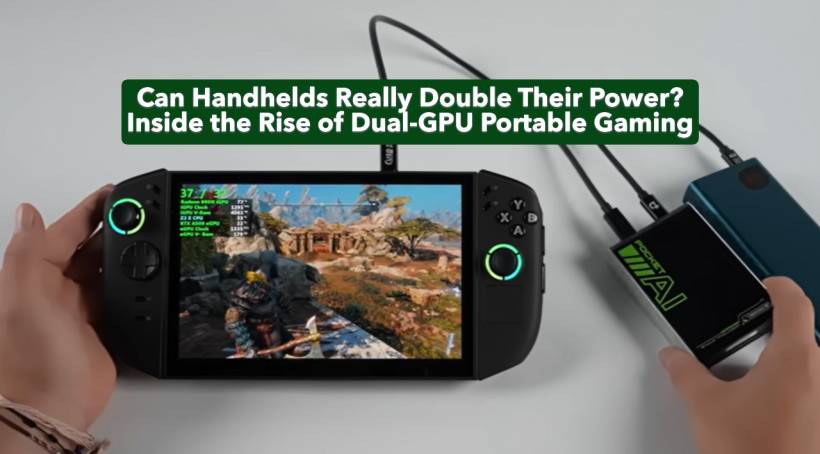What if your handheld gaming PC could push twice—even three times—the frames while you're on battery? That's the promise behind a new, experimental approach: teaming the device's built-in graphics (iGPU) with a battery-powered external GPU (eGPU) to share the workload. Think big titles like Cyberpunk 2077 or Spider-Man 2 on a portable, boosted not by one GPU, but two working in tandem.
Content creator ETA Prime put this idea through its paces on Lenovo's Legion Go 2, pairing its Radeon 890M iGPU with a compact RTX A500 eGPU. The goal wasn't to replace the iGPU, but to augment it—using the RTX unit as a frame-generation accelerator. The result? Eye-opening gains in some games, plus a sober look at the bottlenecks that still stand in the way of a frictionless experience.
The Big Idea: Split the Job, Share the Frames
Traditional eGPU setups pipe video out to an external monitor. This experiment flips the script:
When it works, you get substantially higher frame rates on the built-in screen while remaining fully portable.
Test Bench: What Was Used (and Why)
Handheld: Lenovo Legion Go 2
APU / iGPU: Ryzen Z2 Extreme + Radeon 890M
eGPU: RTX A500 ("Pocket AI") running from a battery pack
Connection: USB4 to the handheld, no dedicated video output from the eGPU
Software: Lossless scaling + frame generation tools
This isn't a conventional eGPU dock with a desktop-class GPU. The RTX A500 is compact (and power-sipping at ~25W), which keeps the setup mobile—but also imposes limits.
What Improved (and by How Much)
In titles such as Cyberpunk 2077, Spider-Man 2, The Witcher 3, and God of War, the hybrid pipeline often doubled—and sometimes tripled—frame rates compared with iGPU alone. Smoothness improved markedly in scenes where the iGPU's raw rendering kept up and the A500 could layer on its frame-gen magic.
Bottom line: The approach can deliver dramatic uplift, especially at medium settings or when you're willing to balance resolution with reconstruction.
…And What Didn't
The experiment also exposed the rough edges you'd expect from a first-gen concept:
Returning frames to the internal display over USB4 introduces delay and can throttle throughput during heavy scenes. Fast games show this most.
While averages climb, stability can wobble during big effects or dense crowds, leading to hitching or micro-stutter.
With 4GB VRAM, ~25W power, and no dedicated display output, the A500 hits a wall in memory-hungry scenes. In several cases, the Radeon 890M iGPU simply delivered more consistent raw performance.
An external battery plus a tethered module adds bulk—fine for a backpack, less ideal for couch-mode minimalism.
Why the Bottlenecks Happen
Windows and games are built around well-understood rendering paths. Asking one GPU to render and another to generate/scale—and then round-trip those frames—stresses subsystems not originally designed for this choreography. Add the VRAM constraint on the eGPU and the USB4 hop, and you get a good explanation for the stutters and occasional ghosting.
Where This Could Go Next
The concept is promising. To make it practical for everyday gamers, three tracks need to advance:
Next-gen USB4 / PCIe tunneling (and better drivers) to cut latency and lift bandwidth ceilings.
Continued progress in lossless scaling and artifact-resistant frame generation to keep motion crisp and consistent.
More capable low-power modules with higher VRAM, hardware frame-gen, and optional display outputs—still pocketable, but less constrained.
If those pieces fall into place, a handheld could reliably punch above its class without sacrificing the convenience of the internal display.
Who Is This For—Right Now?
If you just want plug-and-play predictability, this isn't ready for prime time—yet.
Final Take
This experiment is a credible proof-of-concept for dual-GPU handheld gaming. It shows that portable devices can tap auxiliary silicon for big, battery-powered boosts—no wall power, no external monitor required. With the right hardware and software evolution, the line between handheld and desktop performance could blur far sooner than anyone expected.




